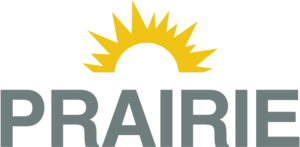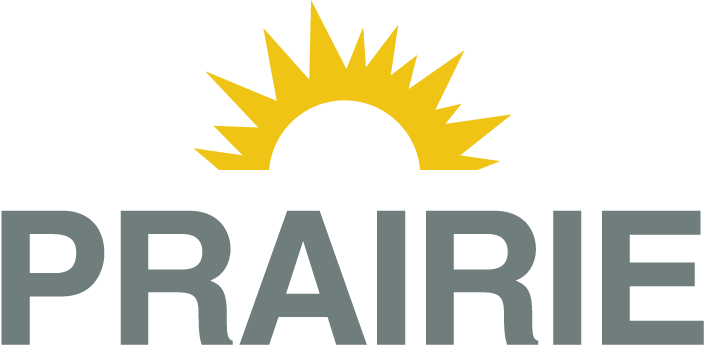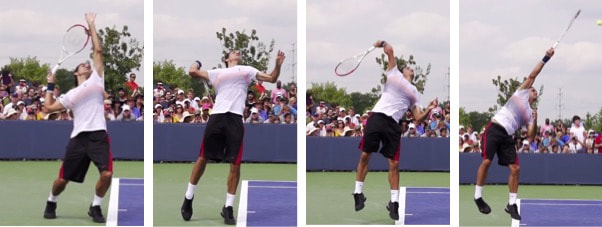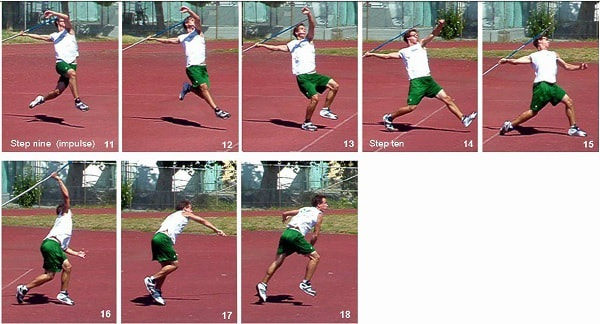Throughout the day, we’re always moving. We sit, bend, stand, walk, and everything else in between. Every time we do something, we go through various forms of the foundational movements of the human body. Although our bodies may look different in many ways, our foundational movements are alike.
These movements are:
1. Squat 2. Hinge 3. Lunge 4. Push 5. Pull
We’re just going to cover the 2 upper body specific movements today. Don’t think of these as “exercises”, instead, think of them as movement patterns that we can perfect by selecting various modes to strengthen the pattern.
Push
 This is a pressing movement, either moving an object away from your body or vice versa. This movement is separated into horizontal or a vertical push and combinations of both. When we perform a push pattern, the main muscle groups worked are the pectorals (chest) and deltoids (shoulders), with assistance from the triceps. When we press horizontally, we incorporate more of our chest and when we press vertically, we recruit more from our shoulders. This pattern occurs every time we push ourselves up out of a chair to stand up or when we put dishes into cabinets, to name a couple. In training, this movement can be seen in exercises such as a push up, bench press, or shoulder press.These movements are also categorized into being either closed-chain or open-chain. Closed-chain movements are when our hands are stationary and we’re moving our body weight, as in a push up. An open-chain movement is when we move an object and our body is stationary, as in a bench press or shoulder press. We should work to perfect closed-chain movements because they will help develop better body and core control over open-chain movements, but they both have a time and a place in training.
This is a pressing movement, either moving an object away from your body or vice versa. This movement is separated into horizontal or a vertical push and combinations of both. When we perform a push pattern, the main muscle groups worked are the pectorals (chest) and deltoids (shoulders), with assistance from the triceps. When we press horizontally, we incorporate more of our chest and when we press vertically, we recruit more from our shoulders. This pattern occurs every time we push ourselves up out of a chair to stand up or when we put dishes into cabinets, to name a couple. In training, this movement can be seen in exercises such as a push up, bench press, or shoulder press.These movements are also categorized into being either closed-chain or open-chain. Closed-chain movements are when our hands are stationary and we’re moving our body weight, as in a push up. An open-chain movement is when we move an object and our body is stationary, as in a bench press or shoulder press. We should work to perfect closed-chain movements because they will help develop better body and core control over open-chain movements, but they both have a time and a place in training.
 This is a pressing movement, either moving an object away from your body or vice versa. This movement is separated into horizontal or a vertical push and combinations of both. When we perform a push pattern, the main muscle groups worked are the pectorals (chest) and deltoids (shoulders), with assistance from the triceps. When we press horizontally, we incorporate more of our chest and when we press vertically, we recruit more from our shoulders. This pattern occurs every time we push ourselves up out of a chair to stand up or when we put dishes into cabinets, to name a couple. In training, this movement can be seen in exercises such as a push up, bench press, or shoulder press.These movements are also categorized into being either closed-chain or open-chain. Closed-chain movements are when our hands are stationary and we’re moving our body weight, as in a push up. An open-chain movement is when we move an object and our body is stationary, as in a bench press or shoulder press. We should work to perfect closed-chain movements because they will help develop better body and core control over open-chain movements, but they both have a time and a place in training.
This is a pressing movement, either moving an object away from your body or vice versa. This movement is separated into horizontal or a vertical push and combinations of both. When we perform a push pattern, the main muscle groups worked are the pectorals (chest) and deltoids (shoulders), with assistance from the triceps. When we press horizontally, we incorporate more of our chest and when we press vertically, we recruit more from our shoulders. This pattern occurs every time we push ourselves up out of a chair to stand up or when we put dishes into cabinets, to name a couple. In training, this movement can be seen in exercises such as a push up, bench press, or shoulder press.These movements are also categorized into being either closed-chain or open-chain. Closed-chain movements are when our hands are stationary and we’re moving our body weight, as in a push up. An open-chain movement is when we move an object and our body is stationary, as in a bench press or shoulder press. We should work to perfect closed-chain movements because they will help develop better body and core control over open-chain movements, but they both have a time and a place in training.
Pull
 This movement occurs when we pull an object towards ourselves or vice versa. This can also be divided up into horizontal or a vertical pull and and combinations of both.. The main muscle groups worked are the latissimus dorsi (back), with assistance from our biceps, scapular muscles, and posterior shoulder. Throughout the day we go through this pattern many times doing things such as opening a door, picking something off the floor, and climbing.In training, pull/chin ups or lat pull downs are great for vertical pulling, and bent over, inverted, or cable rows are perfect for developing our horizontal pulling strength. Our hand position can dictate how much or how little our biceps are recruited to assist the other pulling muscles. When we use an underhand grip in exercises such as a chin up or a bent over row, we activate more of our biceps compared to overhand or neutral grip positions. This is why it’s typically easier to do a chin up (underhand) compared to a pull up (overhand). As in the push pattern, these movements are also categorized into being either closed-chain or open-chain. Pull ups and inverted rows are good examples of closed-chain exercises and bent over rows and lat pull downs are open-chain exercises. Both should be incorporated into a good training program.
This movement occurs when we pull an object towards ourselves or vice versa. This can also be divided up into horizontal or a vertical pull and and combinations of both.. The main muscle groups worked are the latissimus dorsi (back), with assistance from our biceps, scapular muscles, and posterior shoulder. Throughout the day we go through this pattern many times doing things such as opening a door, picking something off the floor, and climbing.In training, pull/chin ups or lat pull downs are great for vertical pulling, and bent over, inverted, or cable rows are perfect for developing our horizontal pulling strength. Our hand position can dictate how much or how little our biceps are recruited to assist the other pulling muscles. When we use an underhand grip in exercises such as a chin up or a bent over row, we activate more of our biceps compared to overhand or neutral grip positions. This is why it’s typically easier to do a chin up (underhand) compared to a pull up (overhand). As in the push pattern, these movements are also categorized into being either closed-chain or open-chain. Pull ups and inverted rows are good examples of closed-chain exercises and bent over rows and lat pull downs are open-chain exercises. Both should be incorporated into a good training program.
 This movement occurs when we pull an object towards ourselves or vice versa. This can also be divided up into horizontal or a vertical pull and and combinations of both.. The main muscle groups worked are the latissimus dorsi (back), with assistance from our biceps, scapular muscles, and posterior shoulder. Throughout the day we go through this pattern many times doing things such as opening a door, picking something off the floor, and climbing.In training, pull/chin ups or lat pull downs are great for vertical pulling, and bent over, inverted, or cable rows are perfect for developing our horizontal pulling strength. Our hand position can dictate how much or how little our biceps are recruited to assist the other pulling muscles. When we use an underhand grip in exercises such as a chin up or a bent over row, we activate more of our biceps compared to overhand or neutral grip positions. This is why it’s typically easier to do a chin up (underhand) compared to a pull up (overhand). As in the push pattern, these movements are also categorized into being either closed-chain or open-chain. Pull ups and inverted rows are good examples of closed-chain exercises and bent over rows and lat pull downs are open-chain exercises. Both should be incorporated into a good training program.
This movement occurs when we pull an object towards ourselves or vice versa. This can also be divided up into horizontal or a vertical pull and and combinations of both.. The main muscle groups worked are the latissimus dorsi (back), with assistance from our biceps, scapular muscles, and posterior shoulder. Throughout the day we go through this pattern many times doing things such as opening a door, picking something off the floor, and climbing.In training, pull/chin ups or lat pull downs are great for vertical pulling, and bent over, inverted, or cable rows are perfect for developing our horizontal pulling strength. Our hand position can dictate how much or how little our biceps are recruited to assist the other pulling muscles. When we use an underhand grip in exercises such as a chin up or a bent over row, we activate more of our biceps compared to overhand or neutral grip positions. This is why it’s typically easier to do a chin up (underhand) compared to a pull up (overhand). As in the push pattern, these movements are also categorized into being either closed-chain or open-chain. Pull ups and inverted rows are good examples of closed-chain exercises and bent over rows and lat pull downs are open-chain exercises. Both should be incorporated into a good training program.Push/Pull in Sports
Developing strength and power in these patterns is very beneficial for various movements also. Many actions use a push/pull motion when the shoulder is flexed and extended.
Developing strength and power in these patterns is very beneficial for various movements also. Many actions use a push/pull motion when the shoulder is flexed and extended.

In running, one arm goes back into extension at the shoulder which is a pulling motion, while the opposite arm is going up into shoulder flexion is a pushing motion.

In a jump, we pull as the arms swing down, and push as they swing up to help create more force.
When a hockey player passes or shoots a puck, one hand on the stick pushes while the other pulls.
Rotational movements such as throwing a ball, javelin, or swinging a tennis raquet, use a push/pull action. As one arm swings forward to throw, the opposite arm swings back to add extra power into the movemement.





